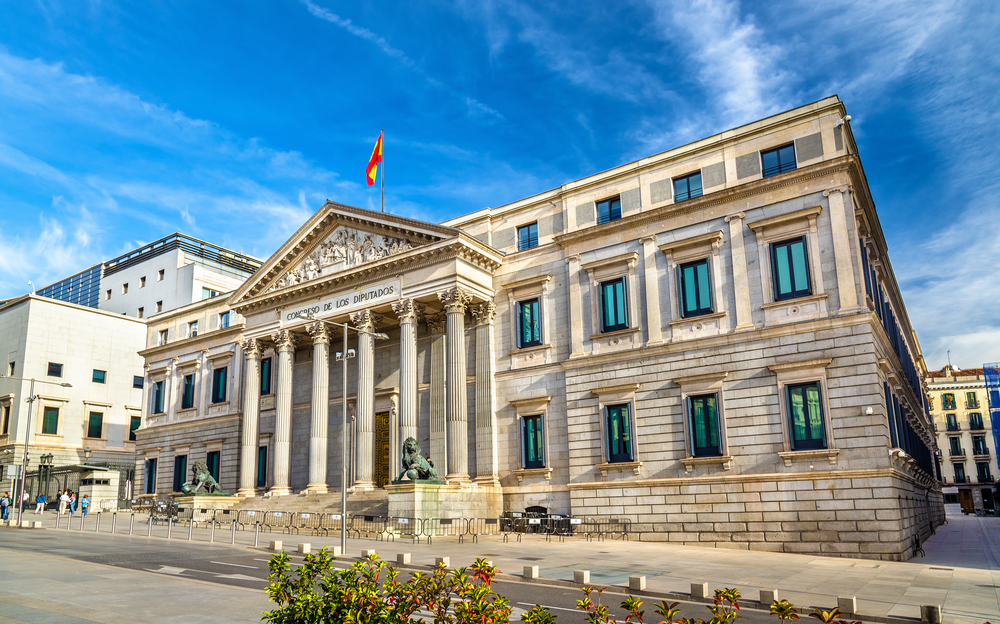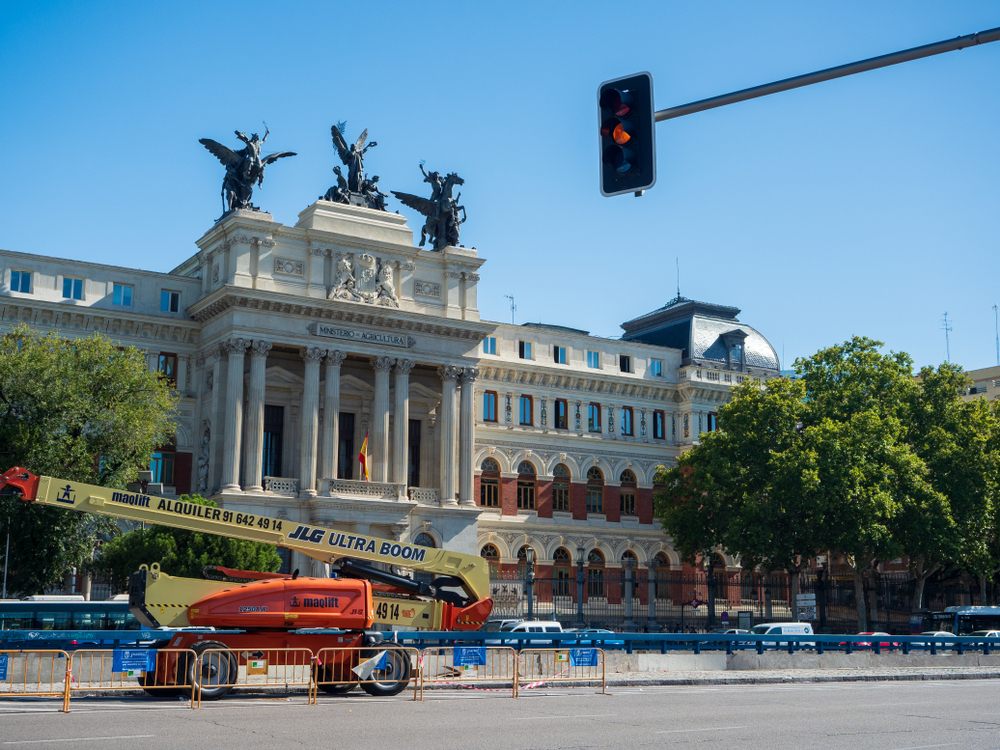Government Overview
Country
Local Long Form: Reino de Espana
Local Short Form: Espana
Etymology: Derivation of the name Espana is uncertain, but may come from the Phoenician term span, related to the word "spy" and meaning "to forge metals;" therefore, i-spn-ya would mean "place where metals are forged." The ancient Phoenicians long exploited the Iberian Peninsula for its mineral wealth.
Capital
Madrid
Geographic coordinates: 40 24 N, 3 41 W
Time Difference: UTC+1 (6 hours ahead of Washington, DC, during Standard Time) Note: Spain has two time zones, including the Canary Islands (UTC 0).
Daylight Savings: +1hr, begins last Sunday in March, ends last Sunday in October.
Independence
Date: 1492: The Iberian Peninsula was characterized by a variety of independent kingdoms prior to the Muslim occupation that began in early 8th century AD and lasted nearly seven centuries. The small Christian redoubts of the north began the reconquest almost immediately, culminating in the seizure of Granada in 1492. This event completed the unification of several kingdoms and is traditionally considered the forging of present-day Spain.
Constitution
History: Previous 1812; latest approved by the General Courts 31 October 1978, passed by referendum 6 December 1978, signed by the king 27 December 1978, effective 29 December 1978.
Amendments: Proposed by the government, General Courts (Congress or Senate), or self-governing communities submitted through the government. Passage requires three-fifths majority vote by both houses and passage by referendum if requested by one-tenth of members of either house. Proposals disapproved by both houses are submitted to a joint committee, which submits an agreed upon text for another vote. Passage requires two-thirds vote in Congress and simple majority vote in the Senate. Amended 1992, 2007, 2011 (2016).
Legal System
Civil law system with regional variations
Citizenship
Citizen By Birth: No
Citizen By Descent: At least one parent must be a citizen of Spain.
Dual Citizenship Recognized: Only with select Latin American countries
Residency requirement for Naturalization: 10 years for persons with no ties to Spain
Suffrage
Suffrage: 18 years of age, universal
Executive Branch
Chief of State: Monarch
Head of Government: President
Cabinet: Council of Ministers designated by the president
Description: The executive branch operates under the mostly formal and ceremonial authority of a hereditary monarch, but the functional head of government and most powerful political figure is the president. The monarch usually proposes as president the leader of the party or coalition with the most seats in the Congress of Deputies. The Congress must then approve the appointment through a vote of confidence. Once elected, the president appoints a Council of Ministers (including a vice president) to lead the major state ministries.
Legislative Branch
Description: Lawmaking authority is vested in the bicameral General Courts (Las Cortes Generales), consisting of the Senate (Senado) and Congress of Deputies (Congreso de los Diputados). The Senate contains 266 seats, with 208 members directly elected in multi-seat constituencies by simple majority vote and 58 members indirectly elected by the legislatures of the Autonomous Communities. Members serve four-year terms. The Congress of Deputies contains 350 seats, with 348 members directly elected in 50 multi-seat constituencies by proportional representation vote and two directly elected from the North African Ceuta and Melilla enclaves by simple majority vote. Members serve four-year terms or until the government is dissolved.
Judicial Branch
Description: The highest judicial bodies are the Supreme Court (Tribunal Supremo) and Constitutional Court (Tribunal Constitucional). The Supreme Court is organized into the 10-member Civil Room, 15-member Penal Room, 33-member Administrative Room, 13-member Social Room, and eight-member Military Room. Judges are appointed by the monarch from candidates proposed by the General Council of the Judiciary Power, a 20-member governing board chaired by the monarch that includes presidential appointees, lawyers, and jurists confirmed by the National Assembly. Judges can serve until age 70. The Constitutional Court consists of 12 judges nominated by the National Assembly, executive branch, and General Council of the Judiciary and appointed by the monarch for nine-year terms. Subordinate courts include the National High Court, High Courts of Justice (in each of the autonomous communities), provincial courts, and courts of first instance.
Copyright © 1993—2025 World Trade Press. All rights reserved.

 Spain
Spain 

